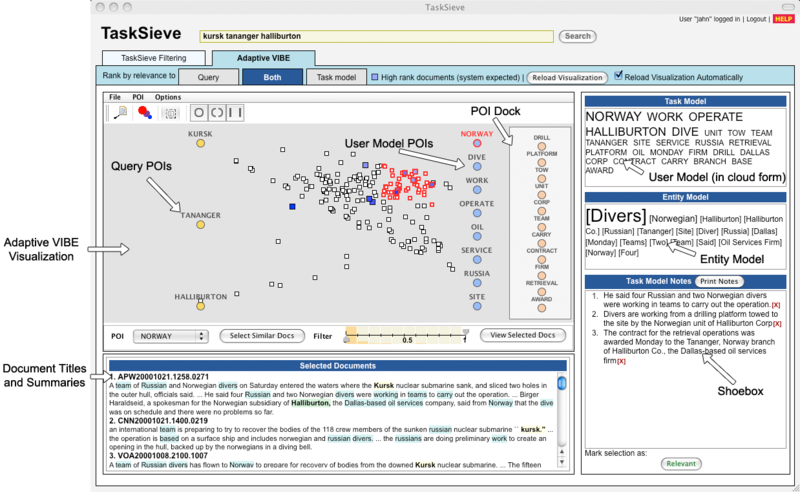Difference between revisions of "Adaptive VIBE"
From PAWS Lab
| Line 1: | Line 1: | ||
| − | + | Adaptive VIBE is a variation of VIBE, a reference point-based spatial visualization algorithm. It supports the visualization of user models as well as usual documents. User model is displayed as a separate group of POIs (Points of Interests or reference points). Because it is located in distant positions from the query POIs, users can mediate visually between their explicit interests (queries) and the system estimated interests or search contents (user models). | |
| − | [[Image:VisualTaskSieve.png| | + | |
| + | [[Image:VisualTaskSieve.png|800px|thumb|center|Adaptive VIBE integrated into the TaskSieve system]] | ||
Revision as of 01:52, 11 December 2009
Adaptive VIBE is a variation of VIBE, a reference point-based spatial visualization algorithm. It supports the visualization of user models as well as usual documents. User model is displayed as a separate group of POIs (Points of Interests or reference points). Because it is located in distant positions from the query POIs, users can mediate visually between their explicit interests (queries) and the system estimated interests or search contents (user models).

